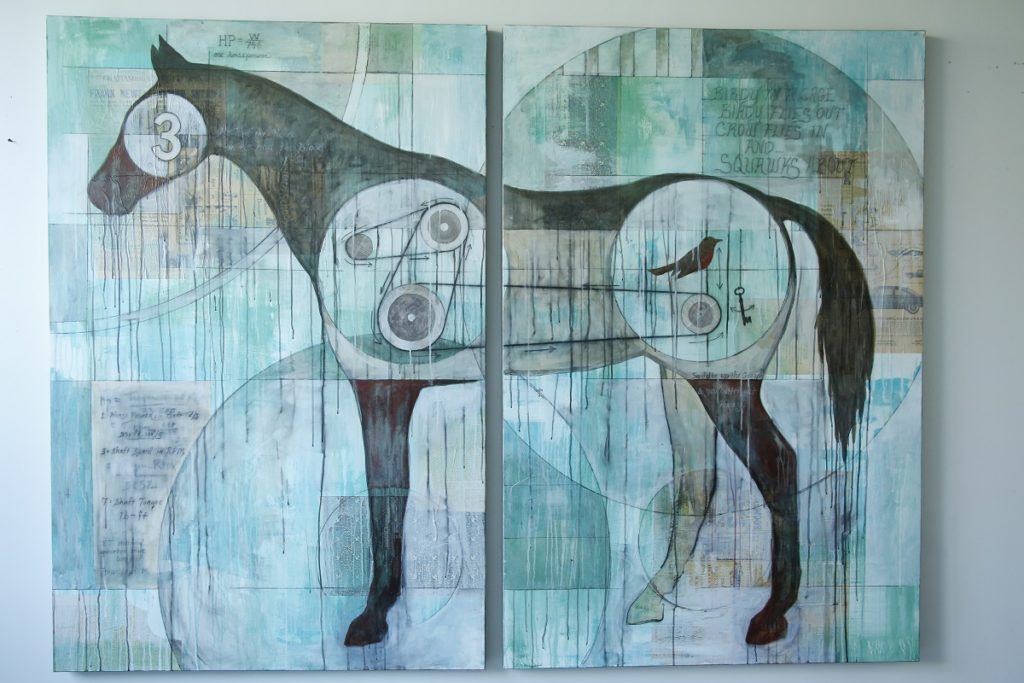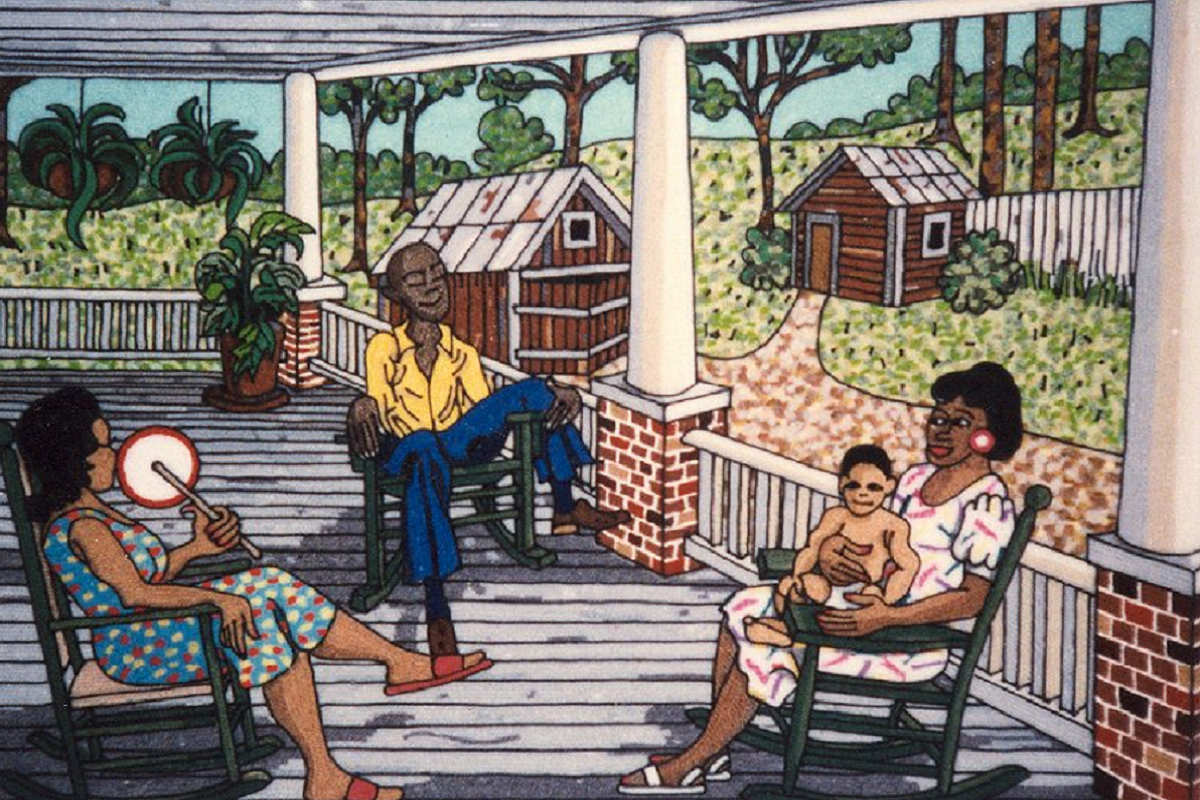A pair of exhibits using unconventional media and methods to depict life in the mountains and rural South will kick off the Carrollton Center for the Arts’ new year, January 3. Ted Whisenhunt’s whimsical interactive exhibit, Cultivated, celebrates the ingenuity, folklore and music of rural Appalachia and runs through Feb. 13. Fiber Stories, an exhibit featuring artist Annie Greene’s creations using mixed-media and yarn, closes Feb. 1. Both exhibits will be launched with a reception at the center at 5:00 p.m. on their shared opening night.
“Both of these artists are masters of their media and they complement each other so well,” said Arts Superintendent Tim Chapman. “Each artist shows work representative of the South and has a narrative component to their work.”
Rural Appalachia and life in the early 20th Century are the sources of inspiration for Whisenhunt’s work, which features movement and encourages viewer interaction by incorporating hand-cranked mechanical systems. The Alabama native currently lives in North Georgia and is a professor of art at Young Harris College.
“One of the most interesting aspects of Whisenhunt’s work is his playful mix of materials and moving pieces,” said Carrollton Visual Art Coordinator, Marcella Kuykendall. “Metal insects dance above animals with the turn of a crank, a bird takes flight with a soft tug of a pulley and a mixed media whirlygig hovers above a patchwork cow, ready to grab the wind. Viewers will get a rare chance to carefully touch the works as they help the sculptures to come alive.”
Georgia native and LaGrange resident, Annie Greene is best known for her yarn paintings featuring colorful knitting yarns outlined in black embroidery thread. Her paintings reflect culturally and socially relevant images of her life as an African-American in the rural South.
“Viewers will be intrigued by the details Greene creates with rows and swirls of colorful yarn,” said Carrollton Visual Arts Coordinator, Marcella Kuykendall. “It can take observers who are new to the works several minutes to figure out that the they are made of fibers. It has been fun installing the exhibit and seeing the surprise on each passerby’s face as they realize the material and time it took to produce each piece.“


